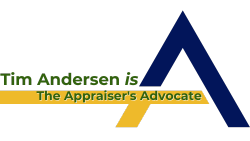Podcast: Play in new window | Download (Duration: 9:07 — 12.5MB)
“Write it backwards?! What can that possibly mean? Tim, I have enough trouble writing my reports in the regular way! Now you want me to write my reports backwards? Please, Tim, would you share with me whatever it is you’re smoking?”
Really, its not a secret. True, it seems logical to write an appraisal report as you do the research. But this podcast advocates a different process. It advocates doing all of the research first. Then, conclude a value opinion (at least a preliminary one). Get all three approaches done. Conclude depreciation. Decide what the vacant site value is. Do all of these things and come up with a value first. That way, you asked, and answered, all of the questions. So, when you write the report, you’re writing from a position of strength. What strength?! Simple! You are writing from the strong position of “having been there before”. The trail holds no secrets. There are no blind corners, no hidden curves. You’ve already concluded a value (at least a preliminary one). So explaining to your client what you did, how you did it, and why you did it, should be straightforward.
Write it backwards? Yes, that sounds counterintuitive. I agree, that’s not the way you’ve always done it. But, if you already know where you’re going, it’s easier to get there the second time, right? And, take a look at this from a standpoint of your appraisal business. Given this model, it might be possible to get out a few more appraisals per month. Since your overhead is more-or-less fixed, that income would flow right to the bottom line, don’t you agree? If following this model results in an easier-to-read report, are your clients really going to argue with that?
Take you next report. Write it backward. It works!


